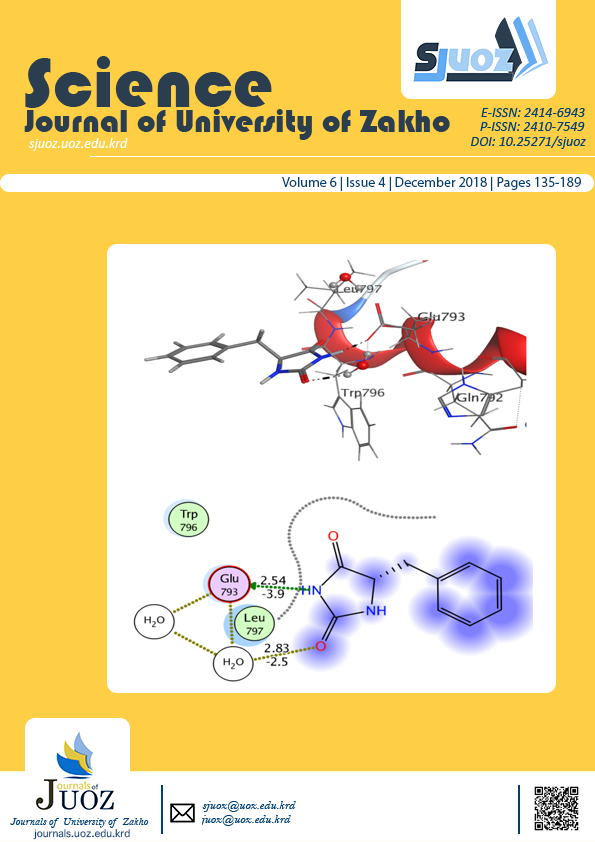Investigation of Optical Properties of ZnO Nanorods Grown on Different Substrates
Abstract
ZnO nanorods arrays are synthesized over the different substrates namely; Indium Tin Oxide (ITO), Kapton Tape (KT), Polyethylene terephthalate (PET), Porous Silicon (PS) and Silicon (Si) using modified chemical bath deposition (MCBD) method at 95 ºC for 4 h. The MCBD is the air bubbles inside growth solution during CBD process. The ZnO nano-seed layers are coated on different substrates using RF magnetron sputtering technique. The optical properties (transmittance, reflectance and energy band gap) and surface morphology of ZnO nanorods grown on different substrates have been investigated in details by using UV-Visible Spectrometer and Field emission scanning electron microscopy (FESEM), respectively. The results found that the morphology and diameter of ZnO nanorods is closely concerned to the nature of substrates. Also it is indicated that the substrate has strong and important impact on the growth, optical properties, Egand quality of synthesized ZnO nanorods (NRs). The higher transmittance has been observed for ZnO NRs grown over KT substrates and is about (~ 33 %). The average transmittance decreases sharply near UV region at wavelength around 393 nm for ZnO nanorods grown on ITO substrate. However, for PET and KT substrates, the transmittance decreases sharply near visible region around 401nm and 498 nm, respectively. Besides, the ZnO NRs grown on PS substrate have the strong reflectance characteristics after approximately 395 nm, and then decreases in the wavelength range of 410 nm to 700 nm. On the other hand, the strong reflectance property of ZnO NRs grown on Si substrate is observed at 400 nm. Also the minimum and maximum Egare obtained for ZnO nanorods that fabricated on the KT substrate and porous silicon substrate, respectively.
Full text article
Authors
Copyright (c) 2018 Ahmed F. Abdulrahman, Sabah M. Ahmed, Naser M. Ahmed

This work is licensed under a Creative Commons Attribution 4.0 International License.
Authors who publish with this journal agree to the following terms:
- Authors retain copyright and grant the journal right of first publication with the work simultaneously licensed under a Creative Commons Attribution License [CC BY-NC-SA 4.0] that allows others to share the work with an acknowledgment of the work's authorship and initial publication in this journal.
- Authors are able to enter into separate, additional contractual arrangements for the non-exclusive distribution of the journal's published version of the work, with an acknowledgment of its initial publication in this journal.
- Authors are permitted and encouraged to post their work online.
